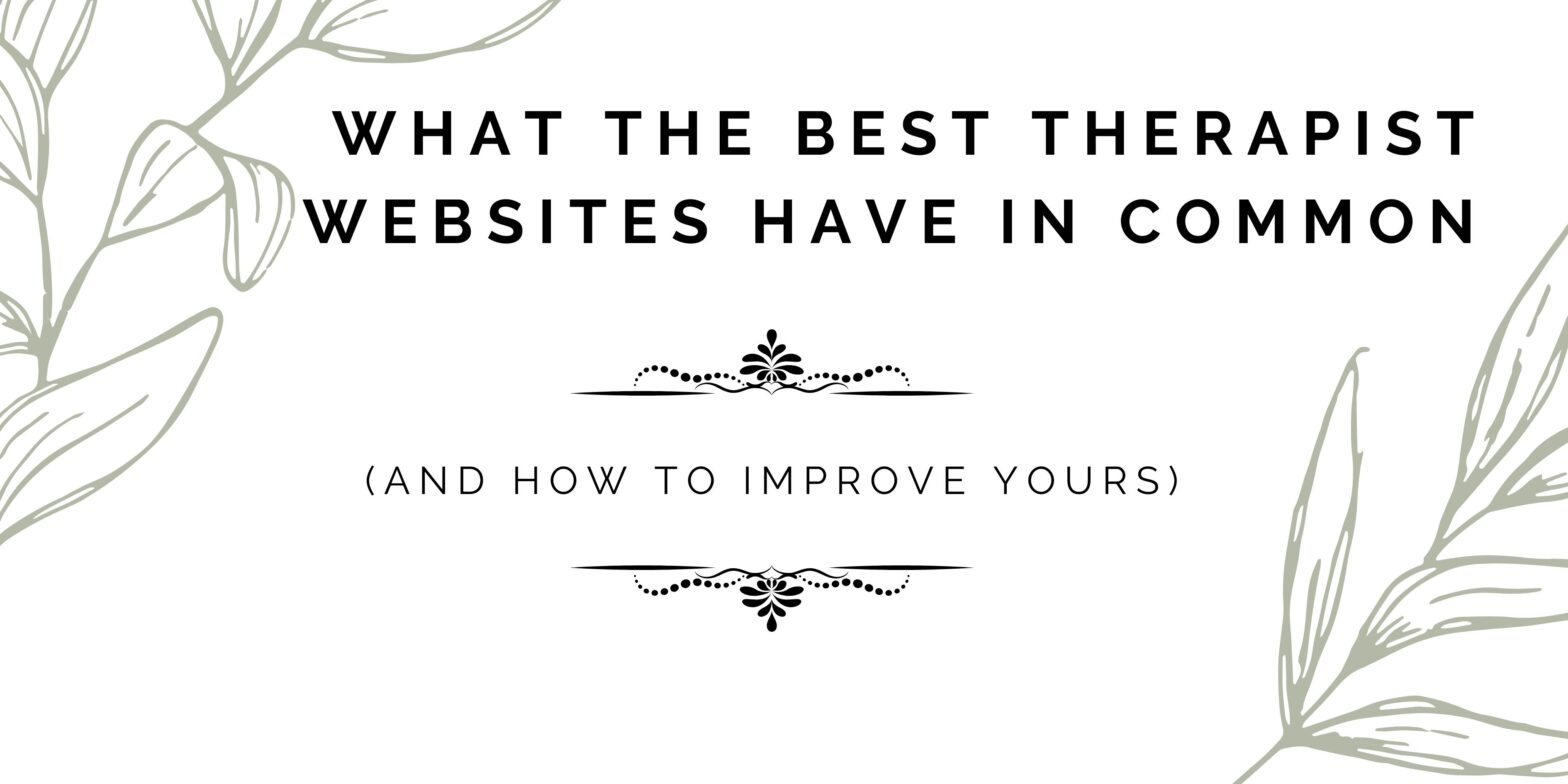Your therapy website is often the first impression a potential client will have of your practice. Before they ever reach out, they’ll read your bio, browse your services, and decide whether you seem like the right fit.
But not all therapy websites are created equal. Some are highly effective in converting visitors into clients, while others feel confusing, outdated, or uninviting.
So, what sets the best therapist websites apart? Below, we’ll break down the key elements of high-performing therapy websites and how you can apply these principles to your own.
Learn More About My Writing Services for Therapists
1. Clear, Compassionate Messaging
A great therapist website immediately reassures visitors that they’re in the right place. It speaks directly to their struggles, validates their experiences, and offers a sense of hope.
✔ What the Best Therapist Websites Do:
- Use client-centered language (e.g., “Are you feeling overwhelmed by anxiety?” instead of “I specialize in treating anxiety disorders.”)
- Show empathy and acknowledge the visitor’s emotions
- Provide clear, actionable next steps (e.g., “Book a free consultation”)
✔ How to Improve Your Website:
- Rewrite your homepage to focus on your ideal client’s needs first
- Ensure your call to action (CTA) is clear and easy to find
- Avoid overly clinical or impersonal language
2. A Well-Written, Engaging Therapist Bio
Your bio is one of the most visited pages on your site. Clients don’t just want to know your credentials—they want to connect with you as a person.
✔ What the Best Therapist Bios Include:
- A warm, inviting introduction
- A brief explanation of why you became a therapist
- An overview of your approach and philosophy
- A professional but relatable tone
✔ How to Improve Your Therapist Bio:
- Rewrite your bio to balance warmth and professionalism
- Avoid overwhelming clients with too much technical jargon
- Include a brief personal touch that humanizes you
3. SEO Optimization for Better Visibility
Even the best therapist websites won’t help your practice if nobody can find them. Search Engine Optimization (SEO for therapists) ensures your website ranks well in Google searches.
✔ What High-Ranking Therapist Websites Do:
- Use keywords clients search for (e.g., “trauma therapist in [city]”)
- Write SEO-optimized blog posts to drive organic traffic
- Ensure fast-loading pages and mobile-friendly design
✔ How to Improve Your Website’s SEO:
- Research local SEO keywords and integrate them naturally into your site
- Start a blog with client-focused, informative content
- Optimize your title tags, meta descriptions, and internal links
4. A Simple, Clean Design That Feels Safe & Professional
A cluttered, outdated website can make visitors feel uneasy or overwhelmed. The best therapist websites are clean, calming, and easy to navigate.
✔ What the Best Therapist Websites Get Right:
- Minimalist, user-friendly design
- Easy-to-read fonts and a soft, welcoming color scheme
- Clear, intuitive navigation
✔ How to Improve Your Website’s Design:
- Keep your homepage uncluttered—focus on the essentials
- Use professional, calming colors like blues, greens, and neutrals
- Make sure your site works well on mobile devices
5. A Blog That Provides Value to Potential Clients
A blog is one of the most underrated tools for therapists. The best therapist websites include blog content that:
✔ Educates potential clients
✔ Improves SEO and increases traffic
✔ Establishes credibility in your niche
✔ What the Best Therapist Blogs Include:
- Articles on common client concerns (e.g., “How to know if therapy is right for you”)
- SEO-friendly posts that help clients find your practice online
- A consistent posting schedule (at least 1-2 posts per month)
✔ How to Improve Your Website With Blogging:
- Start a blog focused on your ideal client’s concerns
- Ensure each post is well-structured and optimized for SEO
- Consider hiring a professional writer to maintain quality and consistency
6. Clear Calls to Action That Convert Visitors Into Clients
Even if your website looks great and has strong content, it won’t help your practice unless visitors take action.
✔ What the Best Therapist Websites Include:
- Clear “Book a Consultation” or “Contact Me” buttons
- Easy-to-find contact information
- A simple intake or scheduling form
✔ How to Improve Your Website’s Conversions:
- Place CTAs prominently on every page
- Keep your contact page simple and easy to use
- Offer a low-pressure way to reach out (e.g., “Schedule a free 10-minute call”)
How to Make Your Website Work for You
The best therapist websites succeed because they are:
✔ Clear and client-focused
✔ SEO-optimized for visibility
✔ Well-designed for ease of use
✔ Engaging and informative
If your website isn’t bringing in consistent inquiries, it may be time to update your content, improve your SEO, or refresh your design.
Need Help Optimizing Your Therapist Website?
I specialize in SEO-optimized content writing for therapists, ensuring your website ranks higher, engages visitors, and converts them into clients. I have a background in psychology, so I know how to engage with potential clients, but I also have a long history of writing for the Internet, so I can help those clients find you!

